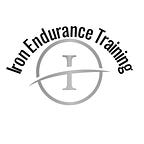Should distance runners lift weights? If so, why? And how?
Let’s face it. Us runners love what we do. And if possible, we’d spend every part of the day engaging in something running related. So the idea of sacrificing time spent running to go into the weight room isn’t one we’d necessarily welcome with open arms. Besides, the elite marathon runners of the world don’t look like they’ve ever seen the inside the weight room a single day in their lives. And we’ve never seen anyone built like a young Arnold Schwarzenegger take the first place podium. So why would a distance runner implement weight lifting into their training? (Read on)
The human body has different types of muscle fibers that are used pending the intensity of the activity we’re doing(see Henneman’s Size Principle). Those muscle fibers being type 1(aka slow twitch), and type 2(aka fast twitch). Our type 1 fibers are aerobic(with oxygen), slow to fatigue, and primarily used during low intensity, endurance activities (like distance running). Type 2 muscles fibers can be broken into various categories. Generally speaking, these anaerobic(without oxygen) fibers are bigger, more explosive, much quicker to fatigue, and require longer rest periods. An example of engaging type 2 muscle fibers would be lifting an amount of weight heavy enough, that the maximum amount of repetitions that can be done is no more than 3–5 (pretty heavy huh). Very likely that if we’re lifting this heavy, we’d need a few extra minutes of rest before we’re ready for another set. Wanna look like Arnold? Then training inside this rep range would be ideal, while progressively overloading the resistance(NO LADIES, THAT DOESN’T MEAN YOU’LL GET BUFF BY LIFTING HEAVY. I suppose that’s another story for another day).
I personally like to train for all seasons. But a majority of us runners aren’t training to look like body builders. We wanna get better as runners. Adding resistance/weight training into your routine will make it safer and more effective, with less stress on our joints. It’s also a lot more aerobic than most would think. But that doesn’t mean we need to load up 500 pounds on a back squat, or 275 pounds on the bench press to be better at what we do. A better idea would be to lift a moderate amount of weight. In other words, an amount of resistance where we can do 15–25 reps(or more)of with shorter rest periods in between sets( about 60–70 % max intensity). This way we’re really engaging those aforementioned type 1 muscle fibers that distance runners primarily use (proper training specificity for distance runners). I typically don’t recommend a specific rest period because fitness levels will vary. But the general formula for endurance training is lighter loads, more reps and shorter rest periods. Progressive overload isn’t necessary, (although for our long term health we should be training all muscle fibers to some extent).
To date, I’ve run 5 marathons with 6th coming in the next few months. These days I spend a majority of my training time in the weight room instead of my running shoes. Of course that works for me. As always, there’s more than 1 way to train, and no training method will work for everyone. But regardless of your training strategy for your next race, there’s 1 thing I can guarantee. Adding in strength training will only make you better.
